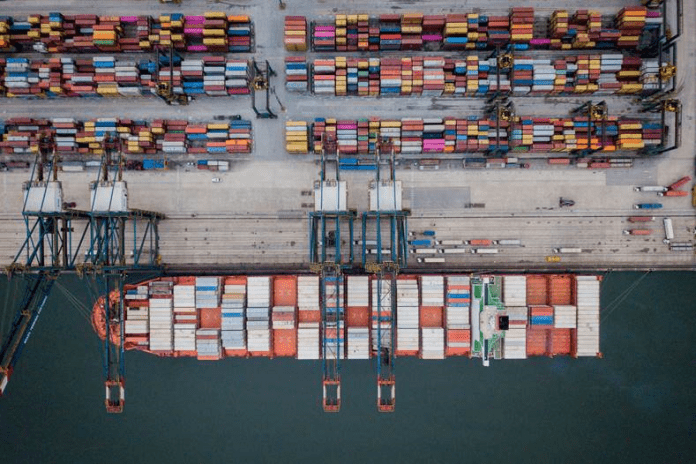The vessel Zhen Hua 35, starting its journey from the port of Shanghai, docked on 16 November at the port of Santos in Brazil carrying two new portainers and eight e-RTGs for the Brazilian port operator Santos Brasil.
Santos Brasil acquired the new electrical equipment aligned with the concept of a low-carbon economy and the sustainability of the port activity growth. The equipment is an important part of the several initiatives already being implemented by the company to become carbon neutral by 2040.
Santos Brasil aims to expand and modernise Tecon Santos, one of the largest and most efficient container terminals in South America, which will receive investments of around US$138.4 million by 2031 to increase the terminal capacity, currently at 2.4 million TEUs, to 3 million TEUs.
Santos Brasil invested US$45 million in the new cranes (US$22 million in e-RTGs and US$23 million in portainers), which crossed the ocean already assembled on the vessel. Further US$2.1 million will be invested in electrical and civil infrastructure works to adapt the terminal yard to the new equipment.
The eight e-RTGs add to the 39 diesel RTGs currently in operation. With the two new portainers, the terminal’s fleet of portainers will increase to 13 (ten ZPMC and 3 IMPSA) all electric.
The company’s plan is to acquire two other ZPMC portainers and carry out the gradual replacement of the current RTGs, which are powered by diesel, with electrical equipment over the next few years.
Replacing a traditional RTG with an electric model allows a reduction of around 21 tons of CO2/month of GHG (greenhouse gas) emissions. Full electrification of RTGs will lead to a 97% reduction in GHG emissions from such equipment at the terminal.
There will be a decrease of 713 tons of CO2/month released into the atmosphere, thus generating a huge environmental gain. The increase in energy consumption at Tecon Santos will be offset through the purchase of renewable energy (I-REC).
Also, e-RTGs bring an important change to the operation, which is the possibility of being conducted remotely, thus allowing greater comfort and safety for the operator, who will be able to control the equipment from within a modern operations center.
In fact, for Antonio Carlos Sepúlveda, CEO of Santos Brasil, the switch from diesel to electricity is fundamental in the company’s decarbonisation process, which explains why the arrival of such new equipment is a milestone.
“We are starting an important movement towards the sustainable growth of the port, increasing Tecon Santos capacity without significant impacts on the environment. Society, the industry and the Company win,” said Antonio Carlos Sepúlveda.







